After Armenia, I travelled with my group overland to beautiful Georgia. It has influences for centuries from Turkey, Russia, Persia and the Central Asia. Such heritage has reflected in its architecture and art. I had a wonderful time visiting some 15 churches and monasteries and major attractions in Tbilisi, Mtskheta, Gori, Uplistsikhe, Vardzia, Ananuri, Signagi, Telavi and Gremi.
Background
Georgia has a total area of 69,700 square kilometres and a population of 4.6 million. It is a mountainous country flanked by a magnificent snow-capped Greater Caucasus Mountain range in the north. It has thrived on agriculture with some 26000 rivers (large and small) and fertile soil. It is famous for possibly inventing wine, hospitality, Caucasus Mountains and dancing. Joseph Stalin (1879-1953), the first General Secretary of the Communist Party of the Soviet Union’s Central Committee from 1922 to his death in March 1953 and the Soviet Premier from 1941 to 1953, was born in Gori.
Like Armenia, Georgia has a long history. Historically, the western portion of Georgia was known as Colchis and the eastern plateau was called Iberia. Its patron saint is St Nino of Cappadocia (the Illuminator of Georgia) who converted Queen Nana and King Mirian III in the early 4th century and Christianity became the state religion in 334.Georgia had been most of the time occupied by independent kingdoms.
The unified Georgia reached the peak of its political and economic strength during the reign of King David IV and Queen Tamar in the 11th and 12th century. Georgia, like Armenia was prey to its powerful neighbours namely Turkey, Persia and Russia. In 1801, Georgia was annexed into the Russian Empire. It gained independence briefly in 1917 – 1921 but remained under the Soviet control till its declaration of independence on April 9, 1991.
Following the Rose Revolution in 2003, Saakashvili has been elected President since 2004 and has introduced economic reforms.Georgia has a good relationship with its neigbhours with the exception of Russia. Its two de facto independent regions namely Abkhazia and South Ossetia both of which have close ties with Russia have been the source of problems for the Georgian government. The 2008 Russo-Georgian War over South Ossetia has further brought the strained relationship to a new low.
Traditionally Georgia had an agriculture-based economy. Given its topography, cultural heritage and natural beauty, its tourism industry has developed rapidly. It has three World Heritage sites, namely the Bagarat’s Cathedral and Gelati Monastery, the historical monument of Mtskheta and the Upper Svaneti.
Day 1 (Wednesday, December 21): Armenia – Tbilisi, Georgia
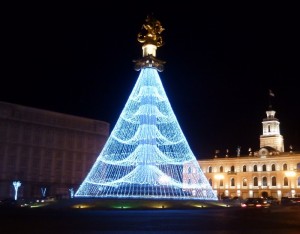 We were greeted by Elisa, our local guide at the border and arrived in the capital Tbilisi after an hour’s drive. We stayed at Sheraton Metechi Palace in Avlabari, the oldest district in Tbilisi situated on the left bank of the river Mtkvari. We had a popular restaurant near the Freedom Square which was beautifully lit up with Christmas lighting. We were delighted to watch Georgian dancing which is known for its fast and brisk movements.
We were greeted by Elisa, our local guide at the border and arrived in the capital Tbilisi after an hour’s drive. We stayed at Sheraton Metechi Palace in Avlabari, the oldest district in Tbilisi situated on the left bank of the river Mtkvari. We had a popular restaurant near the Freedom Square which was beautifully lit up with Christmas lighting. We were delighted to watch Georgian dancing which is known for its fast and brisk movements.
Day 2: Tbilisi
Tbilisi is a charming capital with a population of 1.5 million. Founded by King VakhtangGorgasali in the 4th century on the site of its warm mineral-water spring, the city has developed into the main city of the Caucasus, a key stop on the famous Silk Road and one of the most important political, economic and cultural centres of the Middle East.
We started our day at the lookout point next to the Metekchi Church (the Mother of God Church) where Elisa told us about the history of Tbilisi pointing out the key landmarks on the left side of the river Mkvari (Kura) namely the 4th century Narikala fortress, the St Nicholas Church, Kartlis Deda (the statute of Mother of Georgia) on a hilltop opposite the church and the Holy Trinity complex on Mount Elia (the largest church in Georgia),the official residence of the President of Georgia and the statute of King Vakhtang Gorgasali on horse-back on the right side of the river.
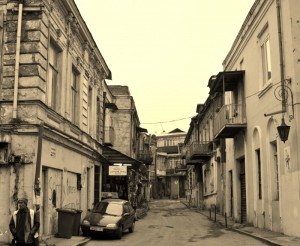 |
We went into the Metekchi Church and watched the service. The Georgians are religious and have deep faith in its spiritual leaders. It is interesting to observe some women queuing up to seek healing by a priest who touched the area they had troubles. Amazing!Our tour bus then took us to the elegant and stately Rustaveli Avenue which is lined with beautiful and well-preserved buildings of different architectural styles. The Parliament, the National Museum and the Opera & Ballet Theatre all look impressive.
Our next stop was the Archaeological Museum with a special exhibition on many exquisite gold and silver items uncovered from the kingdoms in the Colchis period dating back 3000 years.
It is our tradition to celebrate winter solstice with chicken and port. Elisa kindly arranged a sumptuous dinner and we ate delicious roast chicken to our hearts’ delight!
Day 3: Tbilisi –Mtskheta–Gori–Uplistsikhe – Bakuriani (175km)
We had a busy day. Our first stop was Mtskheta where we visited the Jvari Monastery and Svetitskhoveli Cathedral (both are on the World Heritage list).Mtskheta located 20km from Tbilisi at the confluence of Rivers Mtkvari and Aragvi, was the capital of the early Georgian kingdom of Iberia from the 3rd century BC to 5th century AD. Perched on a hill-top, Jvari Monastery (meaning the monastery of the Cross) was the location where St Nino, a female evangelist converted King Mirian III of Iberia to Christianity in 317 AD. A wooden cross was then erected on the spot of a pagan temple. A small church was erected over the remnants of the wooden cross in 545 AD named the ‘Small Church of Jvari”. Then between 586 and 605 AD, Erismtavari Stepanoz I built the present building or “the Great Church of Jvari”. It was the first Georgian church with a copula dome. Today, one can only find the stone base where the cross once stood. The complex was fortified by a stone wall and gates in the 17th century, remnants of which still stand today.
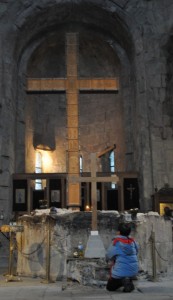 |
The Svetitskhoveli Cathedral is the seat of the patriarch of the Georgian Orthodox church. It is said that Elias, a Georgian Jew from Mtskheta brought Jesus’s robe from a Roman soldier at Golgotha and brought it back to Georgia. Her devout sister Sidonia was so moved that she died upon touching the robe which could not be removed from her grasp. So the place where Sidonia was buried with the robe is preserved in the Cathedral. Later a cedar tree grew from her grave and St Nino ordered the cedar be chopped down to build the church. Seven columns were made out of the tree for the church’s foundation and the seventh column even had magical power.
There is a stone church built into the Cathedral, which was erected to mark this as the second most sacred place after the church of Jerusalem.Among numerous tomb stones on the ground, one finds the one of the last Georgian King (1720-1798).The present magnificent cathedral built in the 11th century is surrounded by a well-preserved defensive wall in the late 18th century.
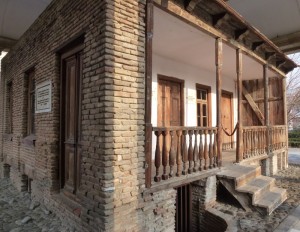 |
We had lunch at Gori, the birthplace of Joseph Stalin and visited the Stalin and Russian Occupation Museum and the small wooden house his family had once lived.
The last stop of the day was Uplistsikhe, a cave town dating 7th century BC. The only visible landmark now is a church with red tiles. The views over the valley with a slow-flowing river against a setting sun were lovely. We arrived in Bakuriani, a ski resort at 1800m covered in snow before 7pm.
Day 4 (Christmas Eve): Bakuriani–Vardzia–Bakuriani (300km; driving 6 hrs)
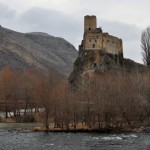 We spent almost three hours driving to Vardzia, a large cave military town first built by Queen Tamar in the 12th century with only brief photo stop at the Khertvisi fortress built in the Middle Ages.
We spent almost three hours driving to Vardzia, a large cave military town first built by Queen Tamar in the 12th century with only brief photo stop at the Khertvisi fortress built in the Middle Ages.
Vardziais is large and has the height of 11-13thstoreys. According to Elisa, the cave once had some 5000 inhabitants. The rock-hewn church still in use has some impressive frescoes.
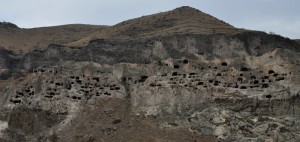 |
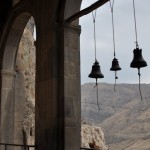 |
On the way back, we visited Timotesubani (the Church of Virgin) built at the end of 12th century. The church covered in snow is charming and picturesque. The frescoes have been damaged as a result of leaking on the roof. Unfortunately I fell outside the church. Though I did not feel any pain, I was prepared for the worst ( I had a slight back pain the following day. After taking more rest and using heat treatment, I recovered without serious mishaps.)
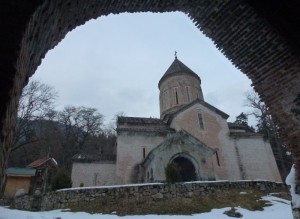 |
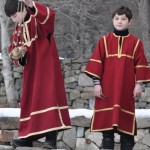 |
Day 5 (Christmas): Bakuriani–Ananuri– Tbilisi (200km)
The Georgian Military Road is the historical road leading north from Tbilisi into the Caucasus Mountains. On our way back to Tbilisi, we drove along this historical road to reach the Ananuri architectural complex of 16th century by the Zhinvali Lake. We stopped in a lively local market meeting many village folk selling their vegetables, fruit, poultry, pigs etc.
We arrived at Tbilisi before 4pm. Elisa took me to a clinic for my second anti-tetanus toxoid injection as I cut my finger two days before leaving Hong Kong. As May had a wound on her tummy and had been coughing and short of breath, she decided to come with me to consult a doctor. May was actually in more serious condition than she had realised. In view of her high blood pressure and unusually fast heart- beat, she was immediately admitted to hospital. (She was hospitalized from December 25 to 29).
We exchanged Christmas gifts and I also gave the scarves I had brought from Bursa to the girls. We all worried about May’s condition. After a big Christmas dinner, four of us went back to hospital to visit her.
Day 6: Tbilisi –Signagi–Kakheti Province –Telavi (200km)
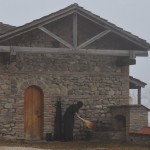 |
We had not been lucky with the weather which was cold and misty. After two hours’ drive, we reached the Bodbe Monastery of St Nino where she was buried. It is an important pilgrimage site for the Georgians. Then we arrived at Signagi, a picturesque small town perched on a hill-top with excellent panoramic views of the Alazani Valley and the Eastern Caucasus Mountains on a fine day. But as it was so misty, we hardly saw anything beyond ten metres. What a pity!
After an early lunch, we proceeded to the Kakheti province, Georgia’s wine district which is dotted with old churches and vineyards. We had a guided tour of Alexander Chavahavadze house museum and the famous historic winery in the Tsinandali Park. There are few bottles of wine dating 1814! We had wine-tasting (but nothing compared with our experience in Yerevan).
Our last stop was the Alaverdi Cathedral built in the 11th century. The complex including a vineyard, a fortress wall around the church and is very impressive and beautiful. Unfortunately, it was getting dark and we were in a rush. Photography is also forbidden inside the complex.
To my surprise, I was given a visa to visit Azerbaijan despite my visit to Karabakh. So I planned to go with the group and return to Tbilisi on December 29 to assist in arranging May’s discharge and return to Hong Kong.
Day 7: Telavi–Gremi– border with Azerbaijan – Tbilisi (200km)
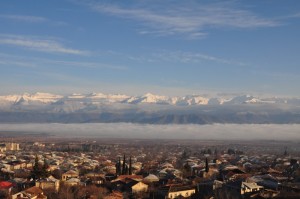 We had brief visit in Telavi, the largest city in the Kakheti Province. The weather was superb with a most beautiful blue sky. While the girls went with Elisa to the market, Patrick and I went to take photos in the town centre.
We had brief visit in Telavi, the largest city in the Kakheti Province. The weather was superb with a most beautiful blue sky. While the girls went with Elisa to the market, Patrick and I went to take photos in the town centre.
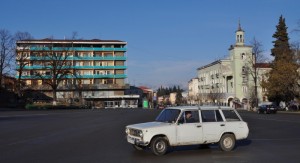 |
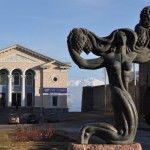 |
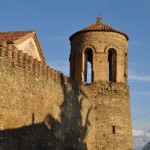 |
Our last stop was at Gremi which has an impressive ruin where a market place, Roman bath and many churches once stood. The complex was destroyed by the Persians in the 17th century. The Church of Apostles perched on a hill-top is most picturesque.
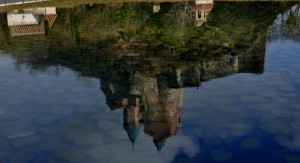 |
We had a delicious lunch at a local family with roast pork and home-made sweet, honey, cognac and wine! We arrived at border at 2pm and crossed the border after bidding farewell to Elisa and our driver.
I felt entering a totally different world after crossing the border. The road is unpaved and muddy. The immigration control is tight. My friends went through ithout problem. But I was retained once the officer saw a stamp from Karabakh n my passport. I was asked by several officers whether I knew about the problem with Karabakh, why and when I went to Armenia and Karabakh, and what I ad seen there. They were polite and I had not been mal-treated. Apparently the officers had to consult their senior officers. After detaining me for over 2 hours, I was told that I could not enter Azerbaijan and had to return to Georgia.
I was annoyed but not surprised. First, I had put down my visit to Karabakh in my application form. They could have simply not issued me a visa. Second, if they discovered my visit belatedly, they could simply let me know and ask me to return to Georgia in the first instance. I hate wasting three hours at the border.
The officers were apologetic and tried to be helpful. They asked one of the drivers to take me back to the check point on the Georgian side. I reached Lagodekhi, the Georgian border town in total darkness around 6pm. The young driver who gave me a lift could not speak English and I had no more laris in my pocket. I changed some money and the young driver found a taxi driver who agreed to take me back to Tbilisi for 60 laris. I finally arrived at my hotel next to the Freedom Square at 9pm. Given the long journey, I gave him 80 laris and he departed with a broad grin!
As it was late, I did not go to the hospital to see May. I was exhausted and tried to sleep. But I had a sleepless night as the room was boiling and I could not turn the heater off!
Day 8: Tbilisi
I went to see May the first thing in the morning. I was relieved to see her in much better shape though her heart beat remained fairly high. She called her specialist in Hong Kong who then had a conversation with the hospital’s consultant. Eventually, the two doctors agreed that May could be released on December 30 if her condition could be stablised.
I spent the afternoon liaising with the travel agent in Hong Kong and George, the local agent to see how May could leave Tbilisi to join up with the group and to return to Hong Kong on December 30. We also tried to see whether her ticket to Hong Kong from Moscow could be upgraded to business class so that she could have a more comfortable journey. After looking at all possible connections, George and I agreed the best way would be for her to fly to Baku to meet up with the group at the airport and then fly to Hong Kong via Moscow using her ticket with Aeroflot. We had to find her a ticket from Tbilisi to Baku.
Day 9 (December 29): Tbilisi
It was a hectic day. May’s condition was stabilized enough to fly the following day. But the doctor advised her to be accompanied. Since she has no insurance coverage for medical repatriation, the best option would be for me to accompany her to Baku. As I could not enter Azerbaijan, I could only transit through Baku. Unfortunately, there was no ticket available from Baku to Istanbul on December 30.
I then asked George to find an escort for May. George is wonderful and one of his English-speaking guides was able to accompany May to Baku. We also arranged an ambulance to take her to the airport and the use of wheel-chair in both the Tbilisi and Baku airport. I spent three hours in travel agencies in order to get tickets for May and the guide to Baku. I sighed with relief when I got their tickets in hand for departure at 1:30am on December 30.
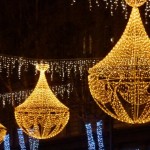 I then rushed to another travel agent to purchase my own ticket to Istanbul on a 6:30am flight on December 30. With a light heart, I spent the next two hours visiting the Holy Trinity Complex and wandering the old town for the last time. I returned to the hospital in the evening and was delighted to see May ready to go.
I then rushed to another travel agent to purchase my own ticket to Istanbul on a 6:30am flight on December 30. With a light heart, I spent the next two hours visiting the Holy Trinity Complex and wandering the old town for the last time. I returned to the hospital in the evening and was delighted to see May ready to go.
We set off with her escort, a nice young Georgian, at 1130pm for the airport. Things went smoothly and I was glad to see her departing on schedule to Baku. I prayed things would go well and she would be back in Hong Kong for proper treatment.
My plane departed on time at 6:30am (Georgian time) and I arrived in Istanbul around 6am (Turkish time). I was so exhausted that I slept all the way to Istanbul!
Remarks
What a most eventful trip! What can one do in 48 hours? Normally not much! But this time, I felt I had done a lot and made a difference in my last two days in Tbilisi. I believe in fate and destiny: it’s lucky that the officers did not allow me in Azerbaijan despite my visa. As a result, I could help May and sorted out the logistics for her way home.
Health is most important: we all must be careful and pay every attention to signals of our body. It is also important to get sufficient insurance coverage for all eventualities as far as possible. I am impressed by the doctors who speak English and the facilities at the hospital in Tbilisi. The doctors are professional and their charge is very reasonable!
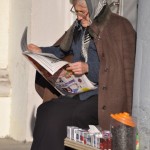 |
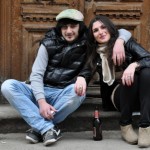 |
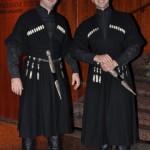 |
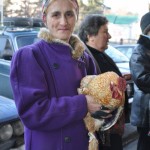 |
I knew nothing about Georgia before the visit apart from the problem of South Ossetia. Georgia is enchanting and has so much to offer. It is a beautiful country with history and numerous remarkable monuments as well as magnificent scenery. It has nice wine, vegetables and fruit. I love to revisit it one day to see Kutaisi, Svaneti, Gelati and Bagrati in Western Georgia and the Tusheti Province famous for its tall, black-slate medieval towers and hill-top villages in the heart of the Greater Caucasus.


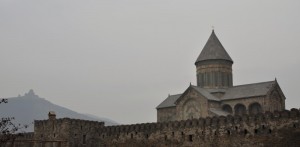
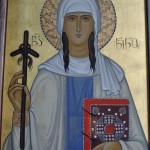
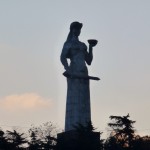
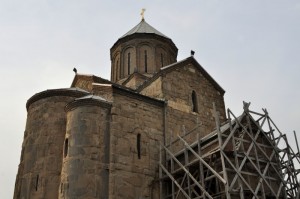
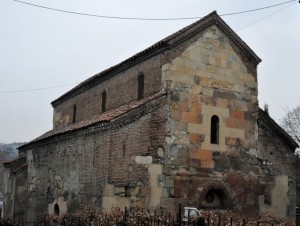
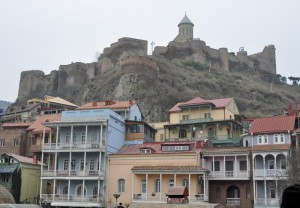
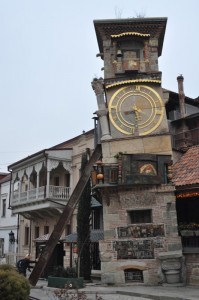
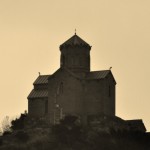
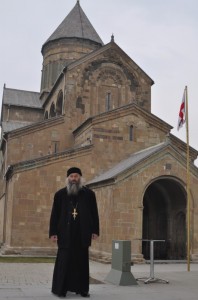
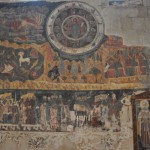
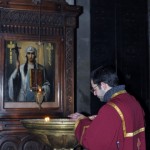
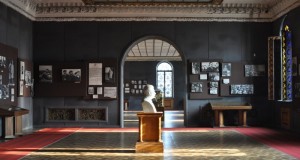
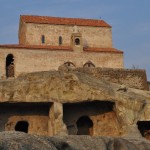
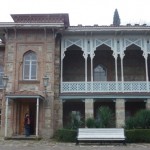
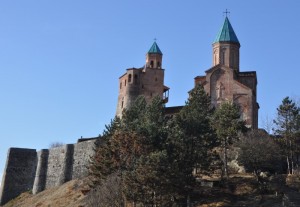
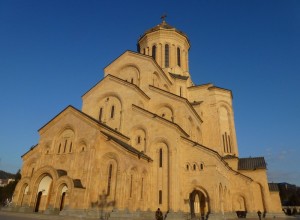
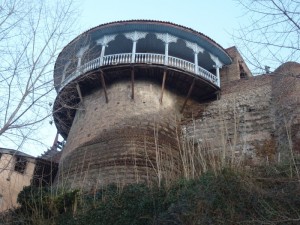
Sarah,
I have to say you are my guard angel! If you hadn’t be Tbilisi, I couldn’t expect what would happen! When I lay on the bed of hosiptal that all of you be Kakheti, I was very upset and wonder what should I do if I discharge next morning (of course that was my fancy thought, the doctor didn’t allow me to leave until 5th day!). I had to admit that I was very happy when I knew you are rejected to Azerbaijan and loved to see you nextday. Thank again!
I visited my doctor and he said my conidition is stable. Look forward to see you on March!
May